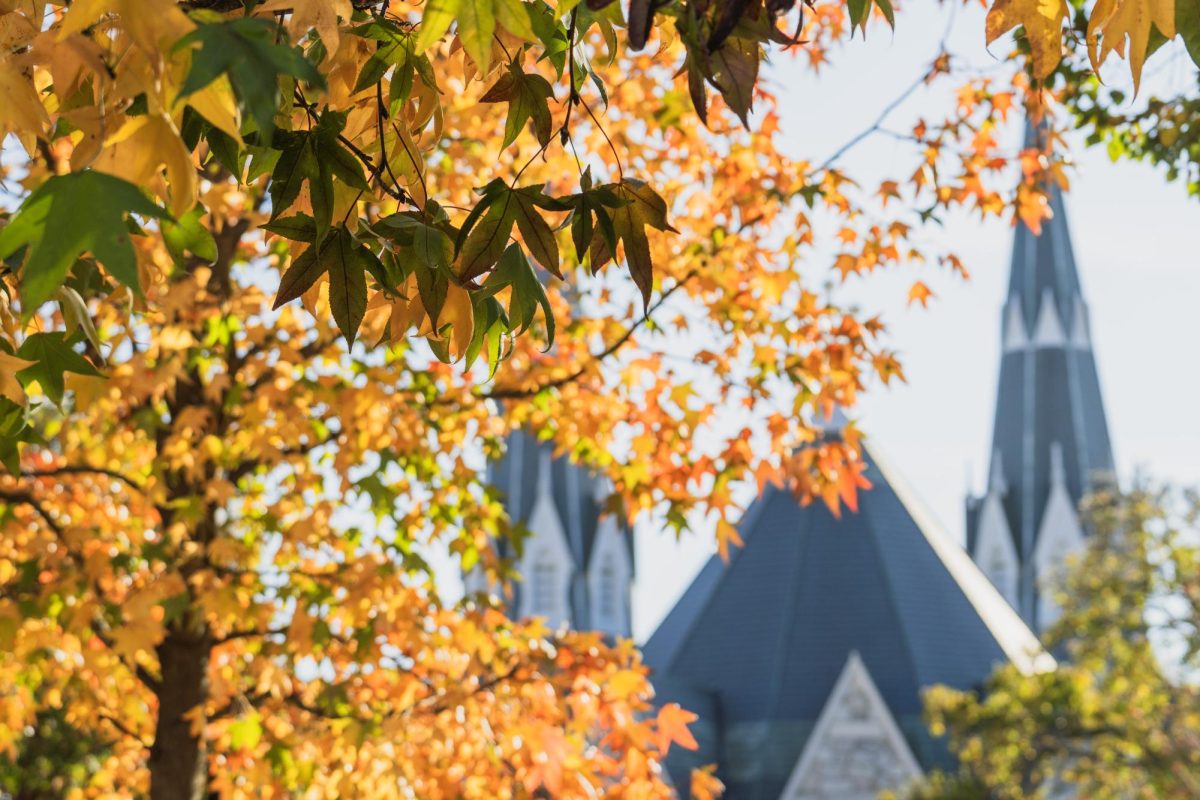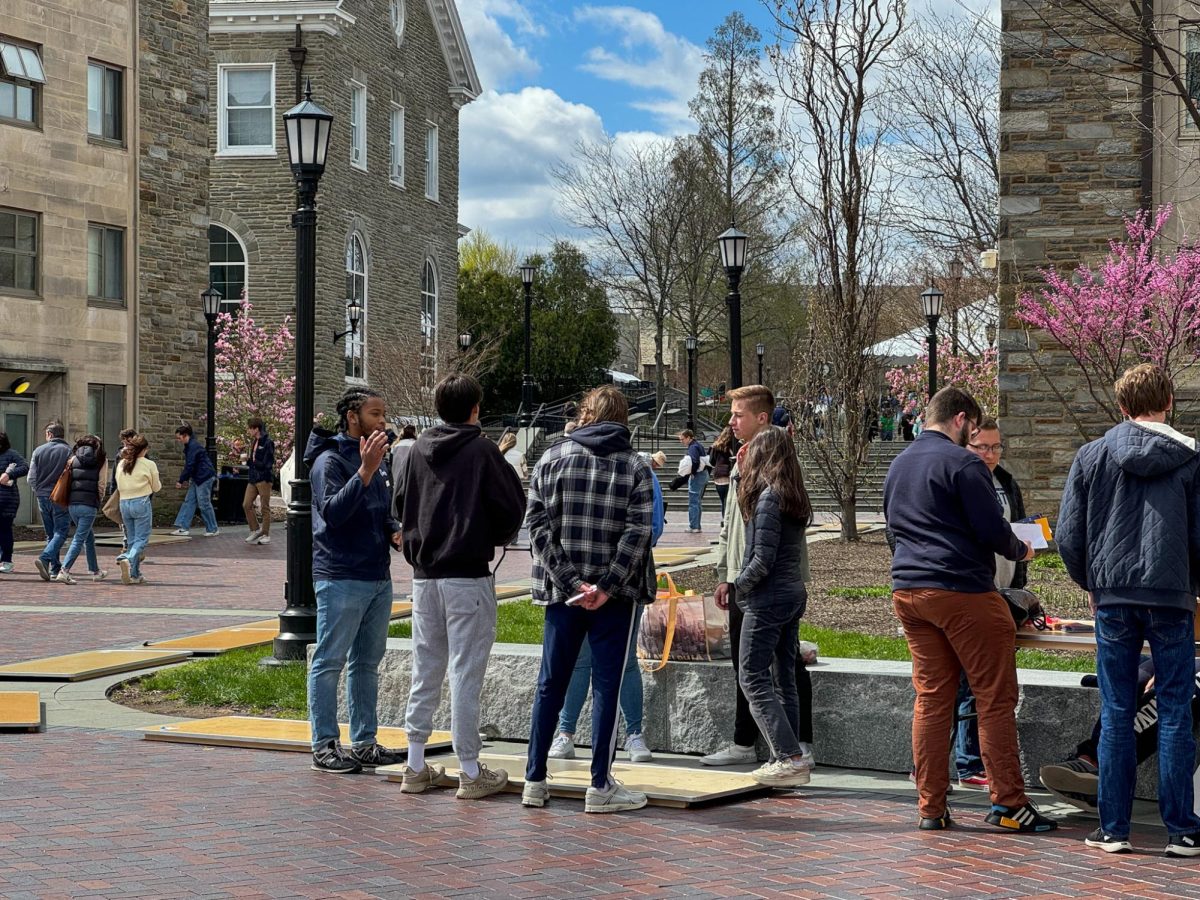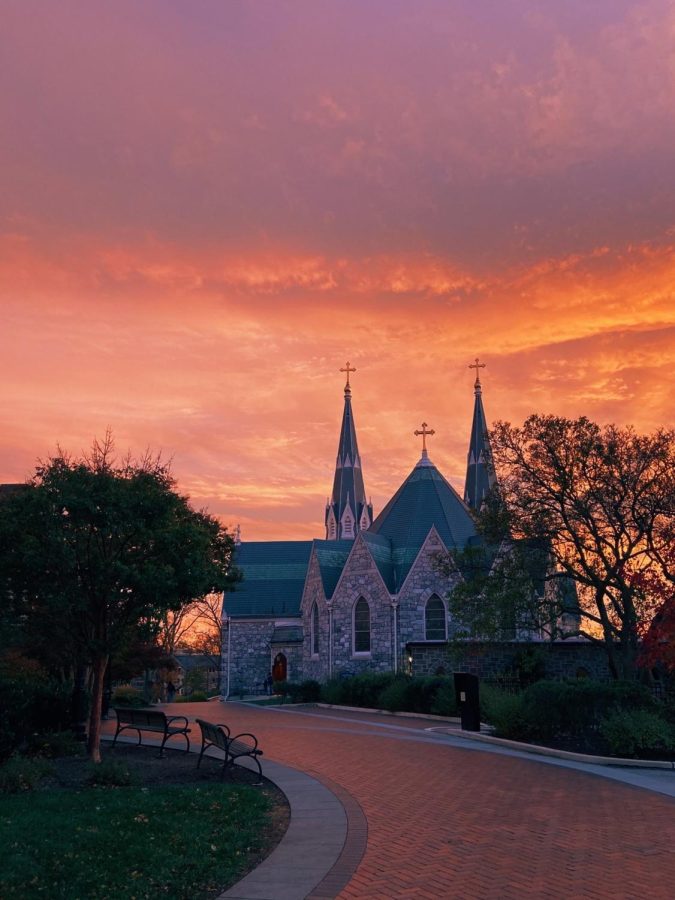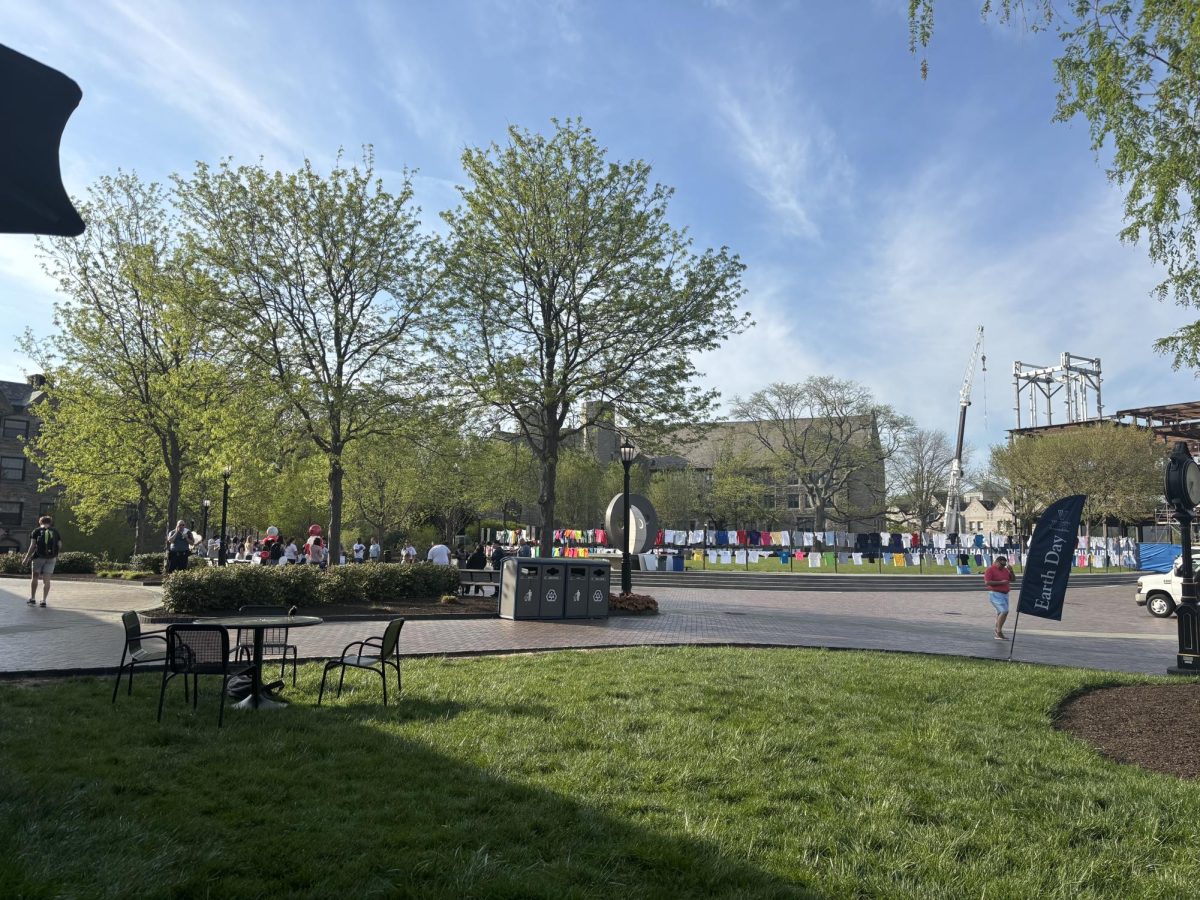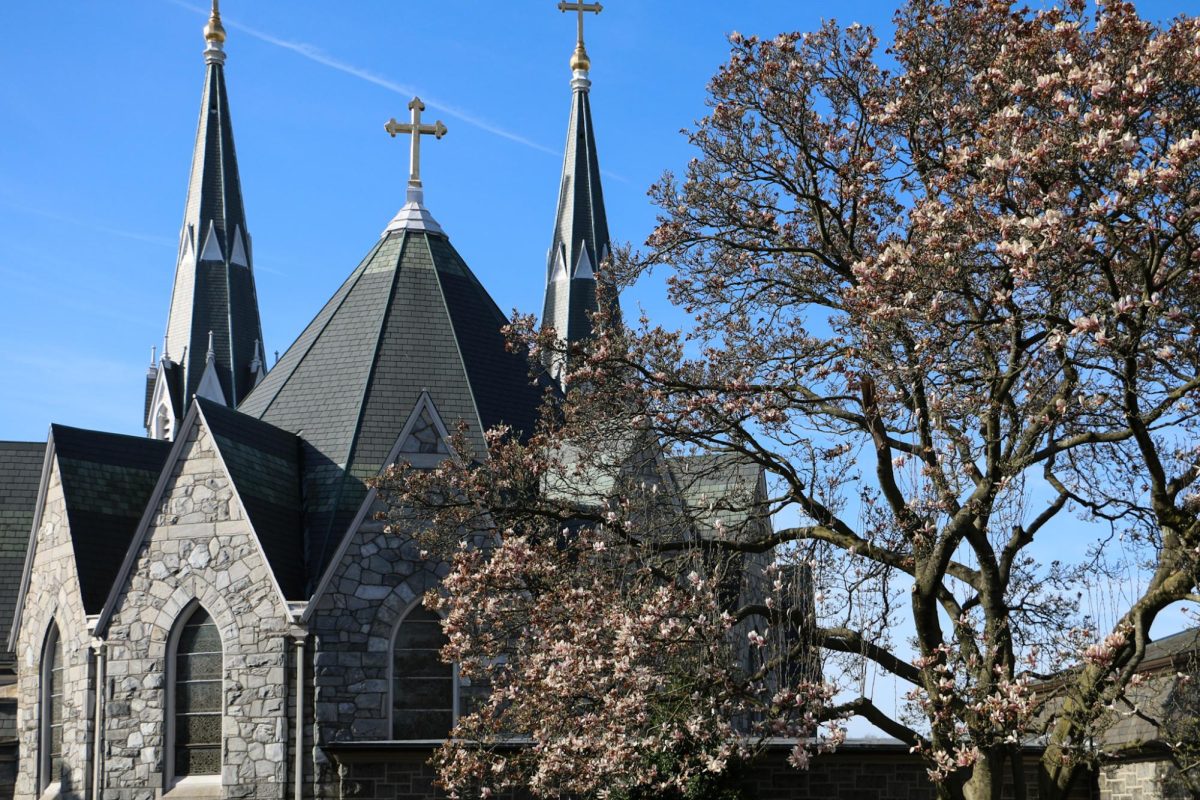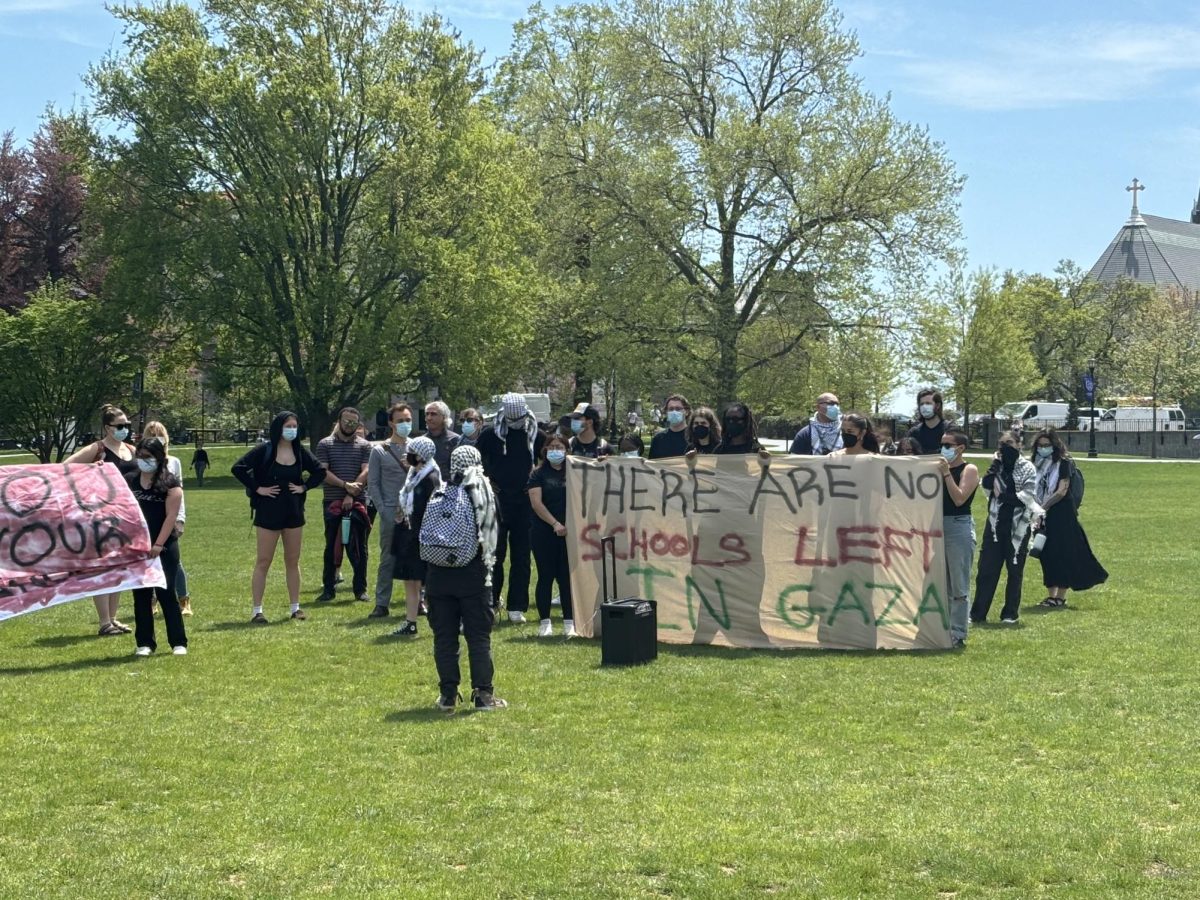On Tuesday, Nov. 7, the fourth-annual Mother Mary Lange Lecture took place in Driscoll Hall. Sponsored by the Office of Mission and Ministry, this lecture is named in honor of the chief founder of the Oblate Sisters of Providence, the first permanent congregation of African American religious women in the Catholic Church. This lecture also celebrates Black Catholic History Month, a month to recognize the contributions and achievements of Black Catholics.
Tia Pratt, Ph.D., the assistant vice president and director of mission engagement and strategic initiatives for the Office of Mission and Ministry, served as this year’s host.
“This event advances Villanova’s ongoing antiracism work by demonstrating antiracism is in fact the work of the church,” Pratt said. “We are honoring all six of the African American candidates for sainthood with a banner display located just outside this room in the atrium of Driscoll Hall.”
She also described the accessibility of the event.
“We continue to make this event as accessible as possible by continuing to have it free, open to the public and live streamed,” Pratt said.
Pratt then introduced Father Kevin DePrinzio, Vice President for Villanova’s Office of Mission and Ministry. Fr. DePrinzio went deeper on the purpose of this event.
“Villanova University continues to elevate her cause for sainthood and also honors the oblate sisters as the first permanent congregation of women religious, founded for and by African American women,” he said.
Afterward, Pratt introduced the lecturer for the evening, Kim R. Harris, Ph.D. Harris is the associate professor of African American Religious Thought and Practice in the Department of Theological Studies at Loyola Marymount University. Harris also is a liturgist, composer and recording artist, a member of the Black Catholic Theological Symposium and the North American Academy of Liturgy.
Harris began the lecture with the spiritual “Motherless Child.” Through this spiritual, Harris introduced Sister Dr. Thea Bowman, a woman who sang this spiritual at the United States Bishops Conference. After singing, Bowman famously spoke on her experience being black in the church,
“What does it mean to be Black and Catholic?” Bowman famously said in 1989. “It means that I come to my church fully functioning. I bring myself, my Black self, all that I am, all that I have, all that I hope to become.”
She then described the origins of spirituals.
“The tradition of the historic negro spirituals is one that contains, at its origins and at its roots, not only Black Protestant traditions but also Black traditions from African heritage, as well as Black Islamic traditions and Black Catholic traditions,” Bowman said.
Then, Harris turned her attention to her growing up, having a strong connection with and admiration for the spirituals sung in church. Then, she brought the audience together to sing one of the spirituals she grew up with.
Harris elaborated that she experienced curiosity for some of the lyrics of the spirituals.
“I questioned why the song’s lyrics seemed to emphasize kneeling and facing the rising sun,” Harris said.
Harris eventually was taught the background of these songs in slavery.
“When I fall on my knees with my face to the rising sun, that could be used not only as a song expressing religious faith but also as a song of freedom,” she said. “A tool of resistance. A song that relayed coded information.”
Harris also added that these songs express a wide array of cultures, especially as those of several differing religions were those forced from their homes, including Black Catholics. Individuals were also “voluntarily or involuntarily forced to convert during the Middle Passage.”
Because of the large number of cultures involved in slavery, songs encompassed a large number of traditions. Harris brought up the spiritual “Hail Mary,” and described the ways it was used to join a civil war regiment together with connections to several different religions and cultures.
Harris also discussed the Stono Rebellion and its connection to Catholic heritage.
Throughout the lecture, Harris brought together the audience in song, allowing audience members to feel included in the “songs of faith and freedom.”
To access the Mother Mary Lange lecture or to learn more about the event, visit the Office of Mission and Ministry’s website.

